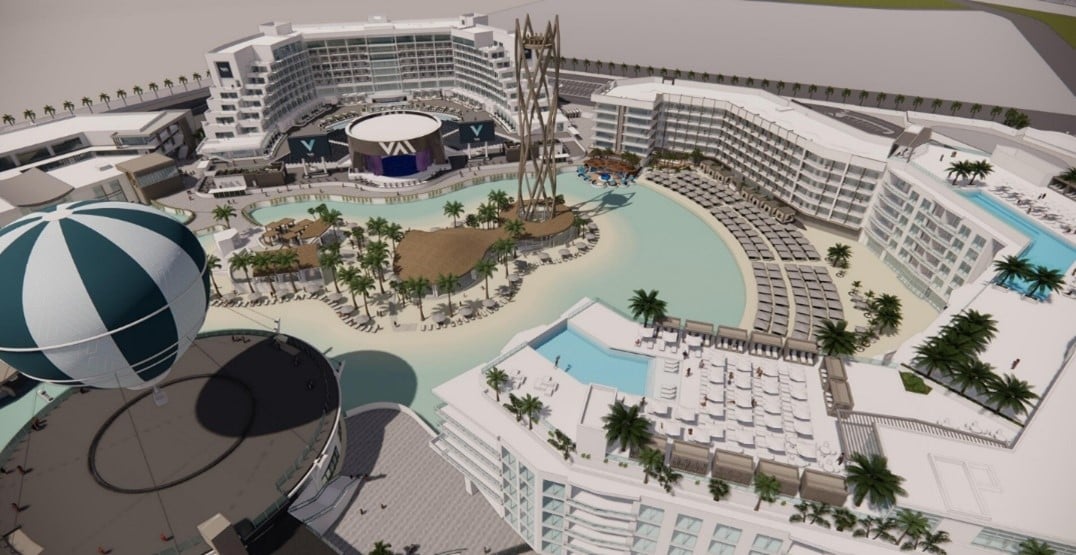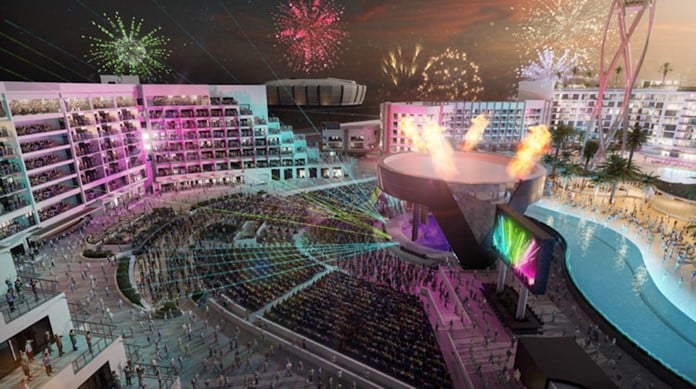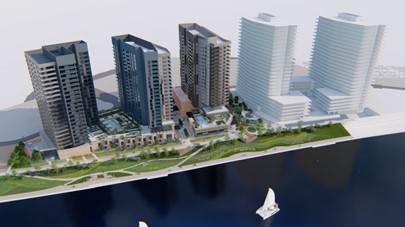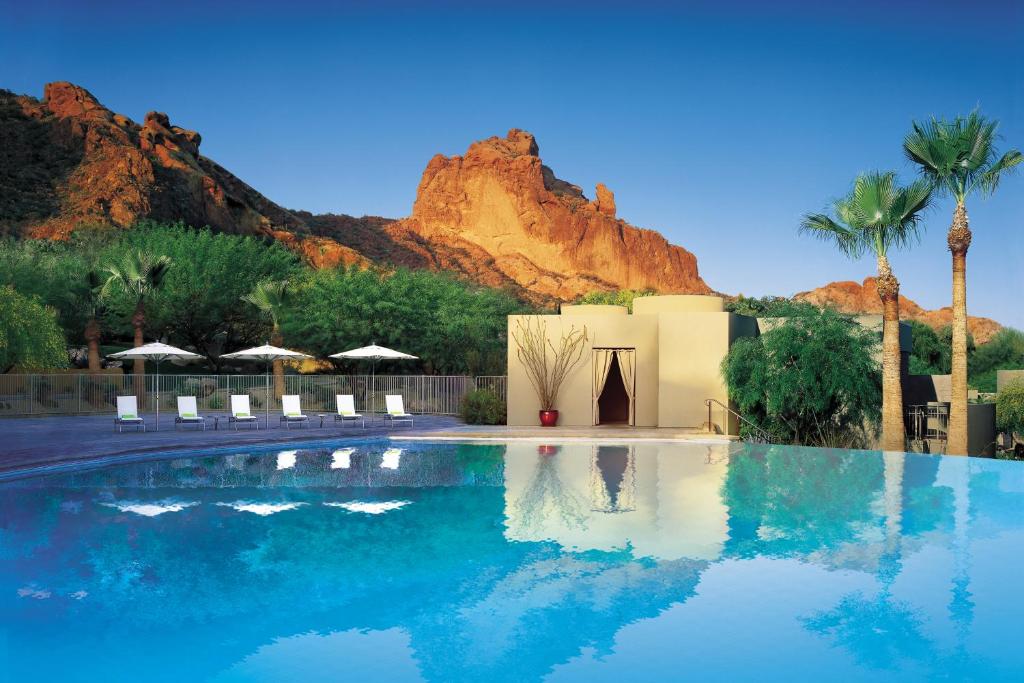Economic Feasibility Studies: Using AI to Provide an Assist for Tourism and Lodging Development
Co-authored by Megan Ritchey
Your company may be looking to add a new property, updates, or an expansion. What would you do if you are asked to prepare an economic feasibility study on a new tourism and hotel development project in your area? What are the major steps that you would include in this economic feasibility study?
The first analysis to conduct is studying financial factors withing the new development project. As the textbook The Tourism System states, Many tourism projects have been economically feasible but have not been developed because the developers were not able to attract the right amount or types of financing
(Morrison et al, 177). In any new development, even those unrelated to tourism, it is crucial to adopt proper financing methods to ensure the project is economically feasible. The next step would ideally be analyzing the relationship between the market and the development project. The textbook mentions the importance of markets being able to support projects (Morrison et al, 181), and it is a good idea to include this in the economic feasibility study, as well. Lastly, it is wise to go over business specifics which may impact the feasibility of the project. These specifics could include a proper risk assessment (Does the project suit our current economy? Will it survive any projected economic changes?), the overall marketing strategy (Does the project’s marketing team know how to promote the new development? Does the project even have a marketing team yet?), and lastly, the timeline details of the project (When is it anticipated to open to the public? How long, and how expensive, will construction be?).
Upon asking ChatGPT, an artificial intelligence resource, how to approach an economic feasibility study, it yielded these results:
(Creating an economic feasibility study for a new tourism development project involves several key steps to assess the viability and potential success of the endeavor.
Here's a comprehensive outline of the major steps typically included in such a study:
- Project Description and Objectives: Begin by outlining the proposed tourism development project, including its scope, objectives, and the intended outcomes. This section should clearly define what the project aims to achieve.
-
Market Analysis:
- Identify the target market segments for the tourism project, considering demographics, psychographics, and geographical locations.
- Assess current trends in the tourism industry, including traveler preferences, behaviors, and spending patterns.
- Evaluate the demand for tourism services and attractions in the area, considering factors such as seasonality, competition, and potential market growth.
-
Financial Analysis:
- Estimate the project's initial investment costs, including land acquisition, construction, infrastructure development, and any other relevant expenses. • Forecast the revenue potential of the tourism project, considering projected visitor numbers, ticket sales, accommodation bookings, merchandise sales, and other sources of income.
- Calculate the operating expenses associated with running the tourism facility, including staffing costs, maintenance, utilities, marketing, and administrative expenses.
- Conduct a sensitivity analysis to assess the impact of various factors (e.g., changes in visitor numbers, pricing, operating costs) on the project's financial performance.
-
Risk Assessment:
- Identify potential risks and challenges that could affect the success of the tourism project, such as regulatory hurdles, environmental concerns, economic downturns, natural disasters, or shifts in consumer preferences.
- Evaluate the likelihood and potential impact of these risks on the project's financial viability and develop strategies to mitigate or manage them effectively.
-
Cost-Benefit Analysis:
- Compare the projected costs and benefits of the tourism development project over its expected lifespan.
- Assess the net present value (NPV), internal rate of return (IRR), and other relevant financial metrics to determine whether the project is financially feasible and generates positive returns on investment.
- Consider both economic and social benefits, such as job creation, infrastructure improvements, cultural preservation, and community development.
-
Legal and Regulatory Considerations:
- Identify and analyze the relevant legal and regulatory requirements governing tourism development projects in the area, including zoning laws, environmental regulations, permits, licenses, and land use restrictions.
- Ensure compliance with applicable regulations and obtain necessary approvals from government authorities and stakeholders.
-
Stakeholder Engagement:
- Engage with key stakeholders, including local communities, government agencies, investors, tourism industry stakeholders, and environmental groups, to gather input, address concerns, and build support for the project.
- Consider the social, cultural, and environmental implications of the tourism development on the local community and ecosystem.
-
Implementation Plan:
- Develop a detailed implementation plan outlining the steps required to execute the tourism development project, including timelines, resource allocation, and key milestones.
- Identify potential partners, suppliers, contractors, and other stakeholders involved in the project implementation process.
- Establish performance indicators and monitoring mechanisms to track progress and ensure that the project stays on track.
-
Conclusion and Recommendations:
- Summarize the findings of the economic feasibility study and provide recommendations regarding the viability and feasibility of the tourism development project.
- Highlight any key opportunities, risks, or challenges that should be addressed during the planning and implementation phases.
- Suggest strategies to optimize the project's financial performance, maximize benefits, and minimize risks.
-
Documentation and Presentation:
- Prepare a comprehensive report documenting the findings, analyses, and recommendations of the economic feasibility study.
- Present the findings to relevant stakeholders, decision-makers, investors, and community members in a clear and concise manner, using visual aids and supporting data to enhance understanding and facilitate informed decision-making.
By following these major steps, you can conduct a thorough economic feasibility study to evaluate the potential of a new tourism development project in your area.) (ChatGPT, 2024).
What secondary sources of information would be the most useful in doing this study?
Some essential methods of retrieving new information are through project heads, such as any supervisors, managers, or executives. They will be a great source of information regarding their current and future plans for the project. Since they work one-on-one with the project, they
will also be the best resource for knowing the project’s obstacles and potential downfalls. Another good source of information is through the project’s competitors. This primarily includes other tourism developments as well as other developments in progress. When looking at existing competitors, you can gather information on what those developments did to remain successful and sustainable. On the other hand, those developments in progress may give me a good idea of where our project is doing well, or even falling short.
ChatGPT also provided insight into secondary sources of information when prompted to do so. The results were as follows:
(Secondary sources of information can provide valuable data and insights to support the economic feasibility study of a new tourism development project. Here are some useful secondary sources to consider:
-
Government Reports and Publications:
- Tourism statistics and reports published by local, regional, or national government agencies.
- Economic development plans and strategies related to tourism.
- Environmental impact assessments and regulatory guidelines for tourism projects.
-
Industry Reports and Market Research:
- Market research reports and studies conducted by tourism industry associations, consulting firms, or market research companies.
- Analysis of tourism trends, consumer behavior, and market dynamics.
- Reports on competitor analysis and benchmarking studies.
-
Academic Research and Publications:
- Academic journals and research papers on topics relevant to tourism economics, destination management, and sustainable tourism development.
- Case studies of similar tourism projects or destinations, highlighting best practices, success factors, and lessons learned.
-
Trade Publications and Magazines:
- Trade publications and magazines focusing on the tourism and hospitality industry, providing insights into industry trends, innovations, and best practices.
- Articles and editorials from experts and practitioners in the field.
-
Financial and Economic Data:
- Economic indicators and statistical data provided by government agencies, central banks, or international organizations.
- Financial reports and statements of companies operating in the tourism sector, such as hotels, airlines, tour operators, and attractions.
-
Online Databases and Portals:
- Online databases and portals specializing in tourism research, economic data, and market intelligence.
- Websites of tourism organizations, research institutes, and universities offering access to relevant reports, studies, and datasets.
-
Surveys and Market Studies:
- Surveys and market studies conducted by tourism organizations, chambers of commerce, or industry associations to gather insights from tourists, residents, and stakeholders.
- Visitor surveys, satisfaction surveys, and feedback mechanisms implemented by existing tourism facilities or destinations.
-
Environmental and Cultural Resources:
- Environmental impact assessments, biodiversity studies, and cultural heritage assessments conducted in the project area.
- Reports and publications from environmental organizations, conservation groups, and cultural heritage institutions.
-
Public Records and Archives:
- Public records, archives, and historical documents providing information on past tourism developments, land use changes, and infrastructure projects in the area.
- Planning documents, zoning maps, and development plans maintained by local government authorities.
-
Social Media and Online Reviews:
- Social media platforms, review websites, and online forums where tourists share their experiences, preferences, and recommendations.
- Analysis of online reviews, ratings, and comments about existing tourism facilities, attractions, and destinations in the region
By leveraging these secondary sources of information, you can gather a diverse range of data and insights to inform the economic feasibility study of the proposed tourism development project.) (ChatGPT, 2024).
What primary research would you conduct in preparing the study (e.g., surveys, focus groups)?
Conducting surveys, both online and in person, is a great way to gain insight on any research study. The people you might try looking for are primarily the residents of the project’s area, who will give an idea of what the community is expecting from and feeling towards the development. As mentioned before, it is important that the market is willing and able to support the project at hand. These surveys might ask questions such as: Have you heard about the new tourism
development in your area? Do you see this development as a valuable edition to your community? Will you or your family ever visit the development once it is open to the public? Are there any negative “side effects” you see as a potential result of this development?
How would you use the Internet to gather information on the potential markets for the new tourism development project?
Initially do research on the local community. Look for basic demographics, such as age and gender of most people who live nearby. Also consider researching the history of the area, finding out more about what other tourism attractions are in the area. After these steps, you can dive deeper into what people nationwide are looking for in relation to tourism. There are likely to be surveys and research papers that already have information on why people travel (example: maybe the majority of people would like a new kid-friendly destination to visit). Sticking with existing information, try finding online articles on the economic impact of new developments. Will this particular project damage or benefit the local economy? Have there been any new developments recently that failed due to not enough interest? How can project planners gain interest? AI is a handy tool to use when you are first gathering information. With AI, you can retrieve supported, personalized information that potentially can help you get started on further research.
How would you use online sources to get information on the likely capital costs of your project?
First look at the history of developments nationwide, to get a rough average of costs. Then study the local economy, as well as the costs of all developments in the area. This will give you a better expectation of any current project’s costs. Also attempt to contact any local
accounting or financial professionals that are familiar with the area and the tourism industry. Do not hesitate to take advantage any and all resources, as even the smallest of sources may be detrimental to your project. Artificial intelligence has become one of the most beneficial resources when developing ideas. AI can help brainstorm, deliver information, and is a great first stepping stone for any project to become educated, knowledgeable, and most importantly, motivated.
Arizona is launching several new projects to keep the tourism industry in a constant state of growth. Here are just a few major additions:
VAI Resort (Arizona):
 VAI Resort was priced at around $1 billion to develop. It occupies 60- acres of the Arizona desert and is home to a $40 million live entertainment venue. What makes the resort so unique is its 5- acre white sand beaches, 12 upscale restaurants, and the world’s first Mattel Adventure Park.
VAI Resort was priced at around $1 billion to develop. It occupies 60- acres of the Arizona desert and is home to a $40 million live entertainment venue. What makes the resort so unique is its 5- acre white sand beaches, 12 upscale restaurants, and the world’s first Mattel Adventure Park.  The VAI Resort is
The VAI Resort is expected to have a $32 million annual economic impact
according to Audrey Jensen at Phoenix Business Journal. This resort development project was originally supposed to have 630 rooms, but conceptually expanded to 1,100 rooms.
Tempe Town Lake’s South Pier (Arizona):
 Tempe has been working on its tourism efforts intensely over the past few years. One of the most recent special elections was considering making Tempe the home city for an NHL franchise in 2022. However, the South Pier project was introduced and approved on February 10, 2022. This project is a
Tempe has been working on its tourism efforts intensely over the past few years. One of the most recent special elections was considering making Tempe the home city for an NHL franchise in 2022. However, the South Pier project was introduced and approved on February 10, 2022. This project is a $1.8 billion mixed-use development,
primarily building new housing, hotel, and office structures (AZ Big Media, 2022). A Ferris wheel was also included in the plan. The South Pier project dedicated $12.5 million to the Tempe Coalition for Affordable Housing, Tempe Transit Funds, and the Tempe Education Fund (Tempe, n.d).
Sanctuary Camelback Mountain (Arizona):
 Sanctuary Camelback Mountain is a 109-room, 5.0-star resort and spa. The resort was originally built in 1955 and last renovated in 2015. It is hope to 4 outdoor pools, a health club, and jogging trails. It is also near a casino, shopping center, and golf course. The resort recently went under new ownership; the new owner just purchased an $11 million home in Arizona. It is unknown how much it cost to develop Sanctuary Camelback Mountain; however, it shows how important tourism is in Arizona.
Sanctuary Camelback Mountain is a 109-room, 5.0-star resort and spa. The resort was originally built in 1955 and last renovated in 2015. It is hope to 4 outdoor pools, a health club, and jogging trails. It is also near a casino, shopping center, and golf course. The resort recently went under new ownership; the new owner just purchased an $11 million home in Arizona. It is unknown how much it cost to develop Sanctuary Camelback Mountain; however, it shows how important tourism is in Arizona.
Arizona thrives on tourism, which is why it is important to keep up with competition in the area. When planning additional property, new ownership, or even new amenities, your main focus should be your guests. The world of hospitality depends greatly on tourists and guests, so gear efforts to ensuring those people are valued.
References
2023 Tech Forecast. (n.d.). Learn.pluralsight.com. Retrieved April 2, 2024, from https://learn.pluralsight.com/resource/offers/2023/cloud-skillsforecast?utm_source=bing&utm_medium=paid-search&utm_campaign=upskilling-and reskilling&utm_term=b2b-na-bing-whitepaper-2023-cloud-skills-forecast-tech trends&msclkid=20123accace81289a2c55cc02b4b5c23
Delaney, E. (2022, March 2). $1.8B South Pier at Tempe Town Lake project gets green light. AZ Big Media. https://azbigmedia.com/real-estate/commercial-real-estate/1-8b-south-pier-at-tempe-town-lake-project-gets-green-light/
Glendale AZ Resort near Cardinals Stadium| VAI Resort. (n.d.). Www.vairesort.com. Retrieved March 29, 2024, from https://www.vairesort.com/
Here’s what VAI Resort project’s economic impact is worth to Glendale. (2023, November 22). ABC15 Arizona in Phoenix (KNXV). https://www.abc15.com/news/business/heres-what vai-resort-projects-economic-impact-is-worth-to-glendale
Morrison, A. M., Lehto, X. Y., Day, J. G., & Robert Christie Mill. (2018). The Tourism System. Kendall Hunt Publishing Company.
New parks, safer streets and big projects coming to Tempe in 2023. (n.d.). The Arizona Republic. Retrieved March 27, 2024, from https://www.azcentral.com/story/news/local/tempe/2022/12/30/tempe-parks-project developments-2023/69749385007/
VAI Resort Unveils VAI Amphitheater: Redefining Live Music and Hospitality. (2023, May 22). Www.businesswire.com. https://www.businesswire.com/news/home/20230522005651/en/
Fred DeMicco
Ph.D., RDN, Professor, the W.A. Franke College of Business, the University of Northern Arizona
The University of Memphis | Kemmons Wilson School of Hospitality and Resort Management

